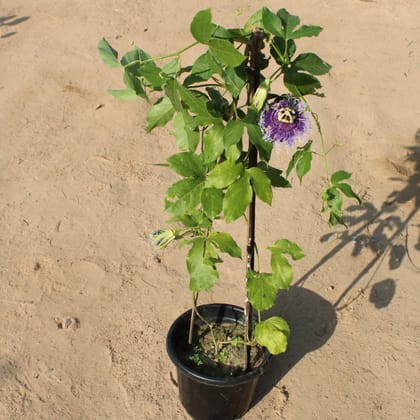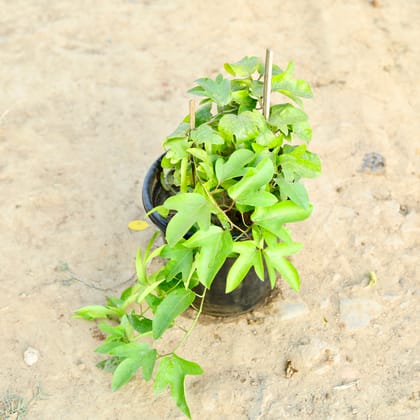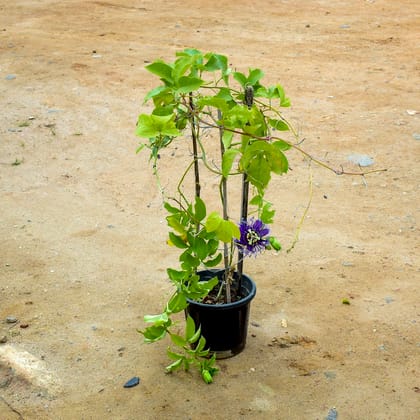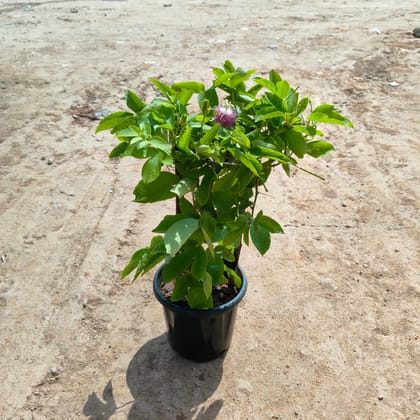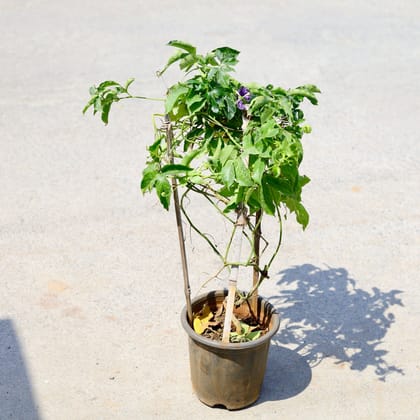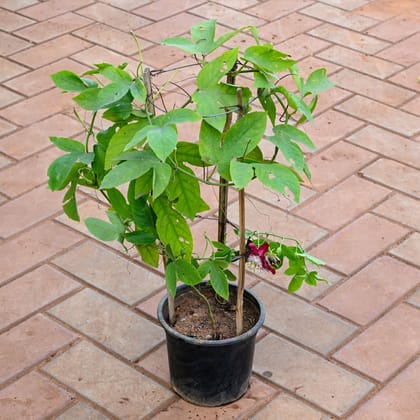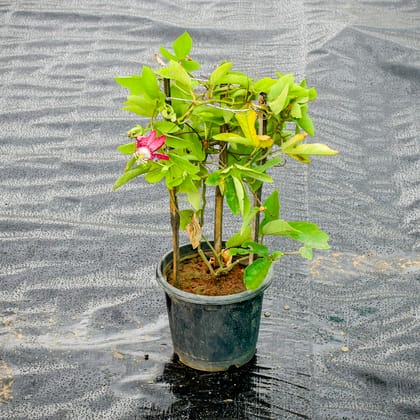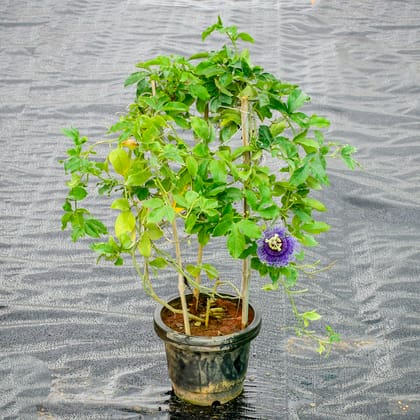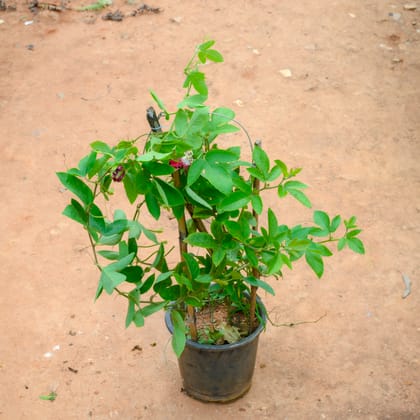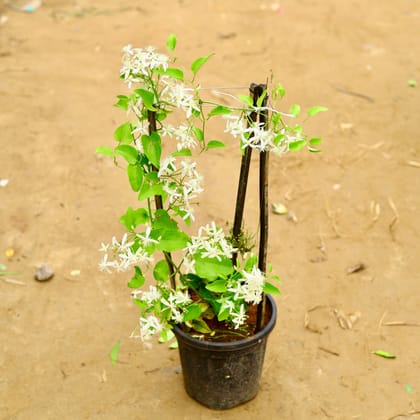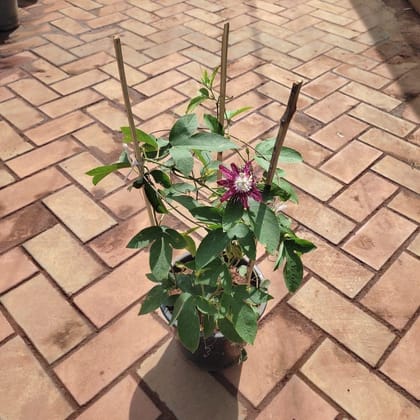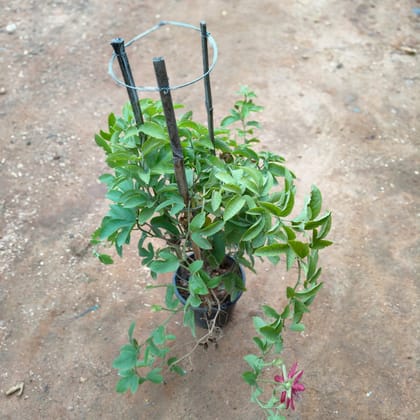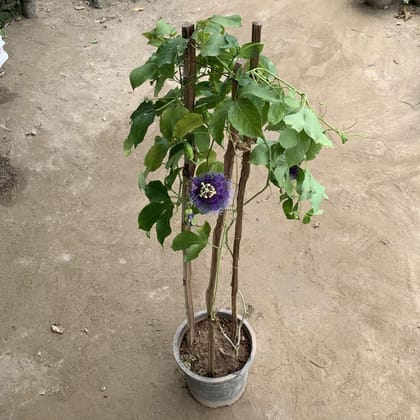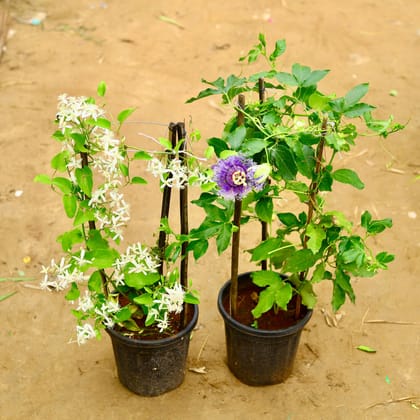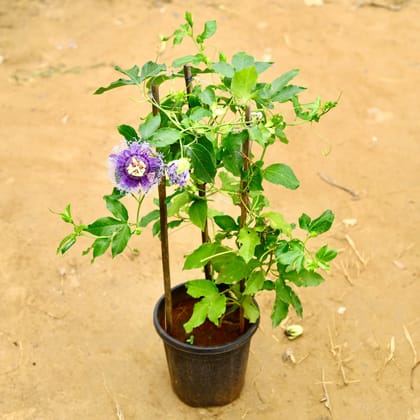- Plants
- Plants
- Pots
- Pots
- Soil & More
- Soil & More
- Home Decor Plants
- Home Decor Plants
- Tools
- Tools
- Seeds
- Seeds
- Gifting
- Gifting
- Bulk Gifting
- Bulk Gifting
- Others
- Others
- Sale
- Sale
- Best Sellers
- Best Sellers
Urvann is your one-stop online nursery for plants, planters, gardening accessories, and tools. Order fresh plants and get free home delivery on the next day!
EN- Home
- Passiflora
Passiflora
Buy Passiflora Plants Online for Your Home Garden
The Passiflora is a delicate flowering vine that entwines your heart along with its many trailing vines.
The blooms of the passiflora plant are elaborate with intricate details found in its many layers of beauty. Also known as the Passion flower, this mesmerizing plant in shades of blue, red, yellow holds cultural significance too.
What are the Benefits of Having a Passiflora Plant?
Adding a Passiflora plant to your garden not only infuses it with exotic charm but also brings a plethora of benefits.
- Attracts Bees and Butterflies
Beyond its stunning blooms, Passiflora, or passion flower plant, attracts pollinators like butterflies and hummingbirds, enhancing the biodiversity of your outdoor space.
- Provides Shade
Its sprawling vines provide natural shade and privacy, creating a personal space for you to relax and enjoy your garden.
Why Choose Urvann to Buy Passiflora Plant Online?
Buy Passion Flower Plant online and enjoy an exceptional gardening experience at Urvann. With convenience, quality and choice, we are the perfect option for plant parents and beginner gardeners looking to add drama and beauty to their homes. The passion flower plant for sale at our website helps you get access to your favorite plants without burning a hole in your pocket.
FAQ About Passiflora Plants
1. What is so special about the Passiflora flower?
The Passiflora flowering plant is an exquisite flower and is not commonly found in home gardens. It will add a distinct charm to your home.
2. What does Passiflora smell like?
The scent of the flower is sweet and thunderously earthy.
3. Are passion flowers rare?
Earlier the plant was rarely found, but has now found an audience with gardening enthusiasts.
4. What is the history of Passiflora?
The passion flower was discovered by the Spanish doctor Monardes in Peru in 1569 and was later rediscovered as an ornamental plant.
Buy Passiflora Plants Online for Your Home Garden
The Passiflora is a delicate flowering vine that entwines your heart along with its many trailing vines.
The blooms of the passiflora plant are elaborate with intricate details found in its many layers of beauty. Also known as the Passion flower, this mesmerizing plant in shades of blue, red, yellow holds cultural significance too.
What are the Benefits of Having a Passiflora Plant?
Adding a Passiflora plant to your garden not only infuses it with exotic charm but also brings a plethora of benefits.
- Attracts Bees and Butterflies
Beyond its stunning blooms, Passiflora, or passion flower plant, attracts pollinators like butterflies and hummingbirds, enhancing the biodiversity of your outdoor space.
- Provides Shade
Its sprawling vines provide natural shade and privacy, creating a personal space for you to relax and enjoy your garden.
Why Choose Urvann to Buy Passiflora Plant Online?
Buy Passion Flower Plant online and enjoy an exceptional gardening experience at Urvann. With convenience, quality and choice, we are the perfect option for plant parents and beginner gardeners looking to add drama and beauty to their homes. The passion flower plant for sale at our website helps you get access to your favorite plants without burning a hole in your pocket.
FAQ About Passiflora Plants
1. What is so special about the Passiflora flower?
The Passiflora flowering plant is an exquisite flower and is not commonly found in home gardens. It will add a distinct charm to your home.
2. What does Passiflora smell like?
The scent of the flower is sweet and thunderously earthy.
3. Are passion flowers rare?
Earlier the plant was rarely found, but has now found an audience with gardening enthusiasts.
4. What is the history of Passiflora?
The passion flower was discovered by the Spanish doctor Monardes in Peru in 1569 and was later rediscovered as an ornamental plant.
- Sort ×
End of product listing
Urvann is your one-stop online nursery for plants, planters, gardening accessories, and tools. Order fresh plants and get free home delivery on the next day!
- Indoor Plants
- Low Maintenance Plants
- Flowering Plants
- Outdoor Foliage Plants
- Religious & Sacred Plants
- Air Purifying Plants
- Cactus & Succulents
- Good Luck Plants
- Plants by Location
- Plants of the Month
- Herbs-Medicinal & Vegetable Plants
- Fruit Plants
- Monsoon Plants
- Hanging Plants
- Potted Plants
- Bonsai Plants
- Special Plant Combos
- Bamboo Plant
- Pet Friendly Plants
- Plants to grow in Water
- Mosquito Repellent Plants
- Climbers & Creepers
Urvann India Private Limited
E-176
Delhi
Delhi 110060
IN
NEWSLETTER
Subscribe to get Email Updates!
Thanks for subscribe.
Your response has been recorded.
